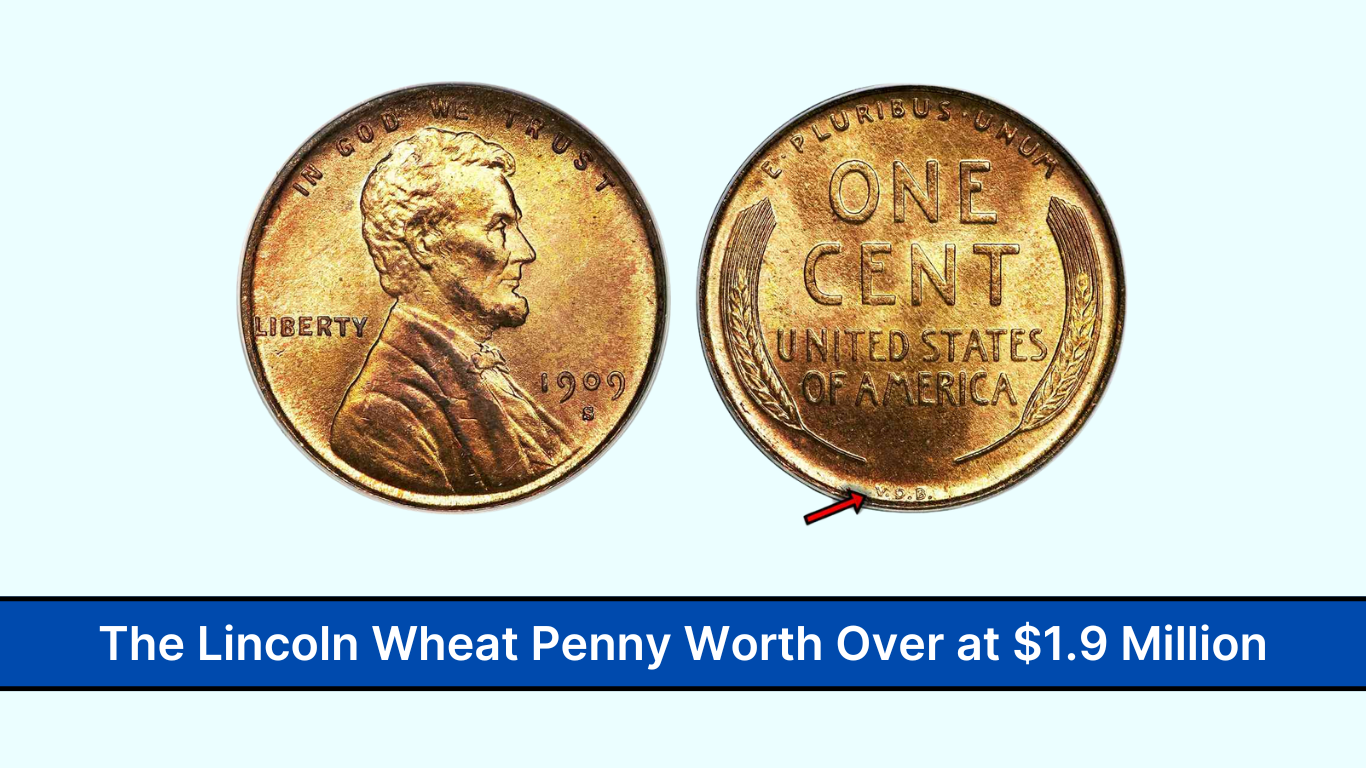Could a simple penny make you a millionaire? It might sound like a fairy tale, but for a lucky collector, the 1943 Lincoln Wheat Penny turned this dream into reality. With one specimen selling for $1.9 million, this rare coin is one of the most fascinating stories in American numismatic history.
In this article, we’ll explore the origins of the Lincoln Wheat Penny, the wartime mistake that made certain 1943 pennies extremely valuable, and how you can identify rare pennies that might still be out there.
The Birth of the Lincoln Wheat Penny
The Lincoln Wheat Penny was introduced in 1909 to commemorate the 100th anniversary of Abraham Lincoln’s birth. Designed by Victor D. Brenner, it was the first U.S. coin to feature a real person, replacing the Indian Head Penny.
Key Features of the Lincoln Wheat Penny (1909–1958):
- Obverse (Front): A portrait of Abraham Lincoln
- Reverse (Back): Two wheat stalks framing “ONE CENT” and “UNITED STATES OF AMERICA”
- Composition: 95% copper (except for the steel pennies of 1943)
For nearly 50 years, these pennies were a common sight in American pockets, making them a nostalgic and collectible piece of history today.
The 1943 Copper Penny – A Wartime Minting Mistak
During World War II, copper was in high demand for military equipment like ammunition. To conserve copper, the U.S. Mint switched to making pennies out of steel in 1943. These steel pennies, coated in zinc, had a silvery appearance and are still commonly found today.
However, due to a rare minting error, a few leftover copper blanks from 1942 were mistakenly used to strike 1943 pennies. These rare 1943 copper pennies—estimated to be fewer than 20 in existence—are now some of the most valuable coins in the world.
Why Is the 1943 Copper Penny Worth So Much?
Extremely Rare – Only a handful exist.
Historical Significance – A direct result of wartime rationing.
High Collector Demand – The rarity and backstory make it one of the most sought-after U.S. coins.
Record-Breaking Sales of the 1943 Copper Penny
Over the years, 1943 copper pennies have set auction records. Some of the highest sales include:
- $1.7 million – A 1943-D (Denver Mint) copper penny sold in 2010.
- $1.9 million – The most recent high-grade specimen reached this price at auction.
- Future Potential? – Some experts predict even higher values in the coming years.
The value of these coins continues to rise, making them an excellent investment for serious collectors.
Could You Still Find a 1943 Copper Penny?
Yes, it’s possible—though the odds are very slim.
When these pennies were first minted, they entered circulation among millions of common steel pennies. People didn’t realize how rare they were at the time, and many were spent just like ordinary pennies.
One of the most recent discoveries occurred in 2019, when a Massachusetts family found a 1943 copper penny in an inherited collection.
How to Identify a Genuine 1943 Copper Penny
If you think you might have a 1943 penny, here’s how to check:
Check the Date: It must say 1943.
Use a Magnet: Steel pennies are magnetic, but copper pennies are not. If your 1943 penny sticks to a magnet, it’s not the rare one.
Weigh the Coin:
- Copper Penny: 3.11 grams
- Steel Penny: 2.7 grams
If your 1943 penny is copper and non-magnetic, it could be worth millions! Have it authenticated by PCGS or NGC to confirm its value.
Other Valuable Lincoln Wheat Pennies
While the 1943 copper penny is the most famous, other Wheat Pennies are also worth thousands of dollars.
1. 1909-S VDB Lincoln Penny – Worth Over $100,000
- Features designer Victor D. Brenner’s initials (“VDB”) on the reverse.
- Quickly removed due to public complaints, making it extremely rare.
- Only 484,000 were minted in San Francisco.
Look for: A small “S” mint mark and “VDB” on the reverse.
2. 1914-D Lincoln Penny – Valued Over $5,000
- Only 1.2 million were minted in Denver.
- Most were heavily circulated, making high-grade examples extremely rare.
Look for: A small “D” mint mark beneath the date.
3. 1922 “No D” Lincoln Penny – Worth Over $10,000
- Produced in Denver, but some coins lack the “D” mint mark due to worn dies.
- This rare error coin commands high prices among collectors.
Look for: A missing mint mark on a 1922 penny.
4. 1955 Doubled Die Lincoln Penny – Worth Up to $125,000
- A minting error caused a dramatic doubling of the date and lettering.
- One of the most famous and sought-after U.S. error coins.
Look for: A clear doubling effect on “LIBERTY” and “IN GOD WE TRUST.”
Beware of Counterfeits
Because rare pennies are worth millions, fake versions exist. Here’s how to avoid counterfeits:
Watch Out for Altered Coins – Some 1948 pennies have been modified to look like 1943.
Use the Magnet Test – A genuine 1943 copper penny won’t stick to a magnet.
Get Professional Authentication – Use PCGS or NGC to verify authenticity.
What to Do If You Find a Rare Wheat Penny
If you believe you’ve found a valuable Lincoln Wheat Penny, follow these steps:
Handle with care – Hold the coin by its edges to avoid damaging it.
Verify authenticity – Perform the magnet and weight tests for key dates.
Have it graded – Professional grading can increase the coin’s value.
Sell through reputable sources – Consider auction houses or certified coin dealers.
FAQs
A genuine copper 1943 penny is non-magnetic and weighs 3.11 grams.
Yes! Some rare pennies have turned up in old collections and pocket change.
Get it graded by PCGS or NGC, then sell through trusted auction houses or dealers.
Verify its authenticity, store it safely, and consult a professional coin expert.

